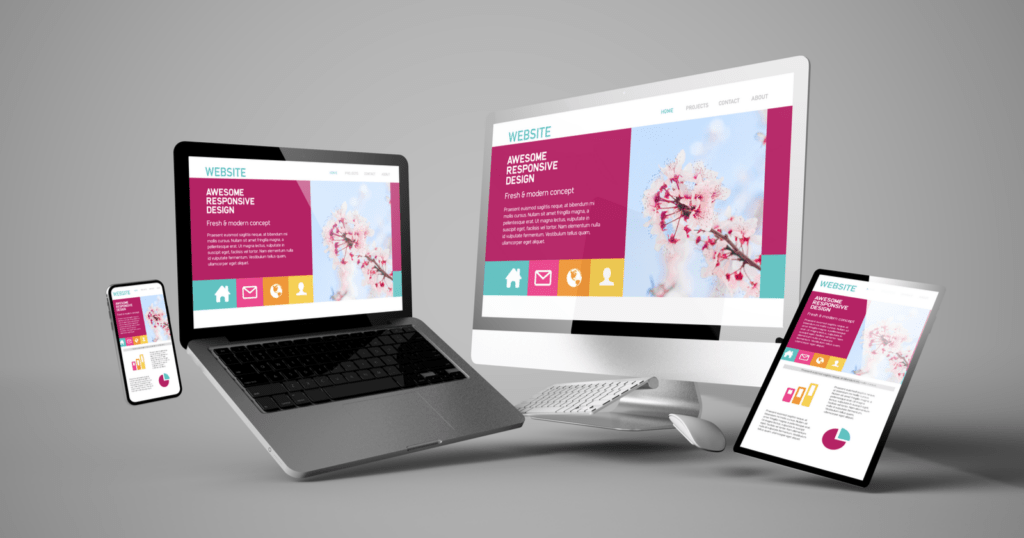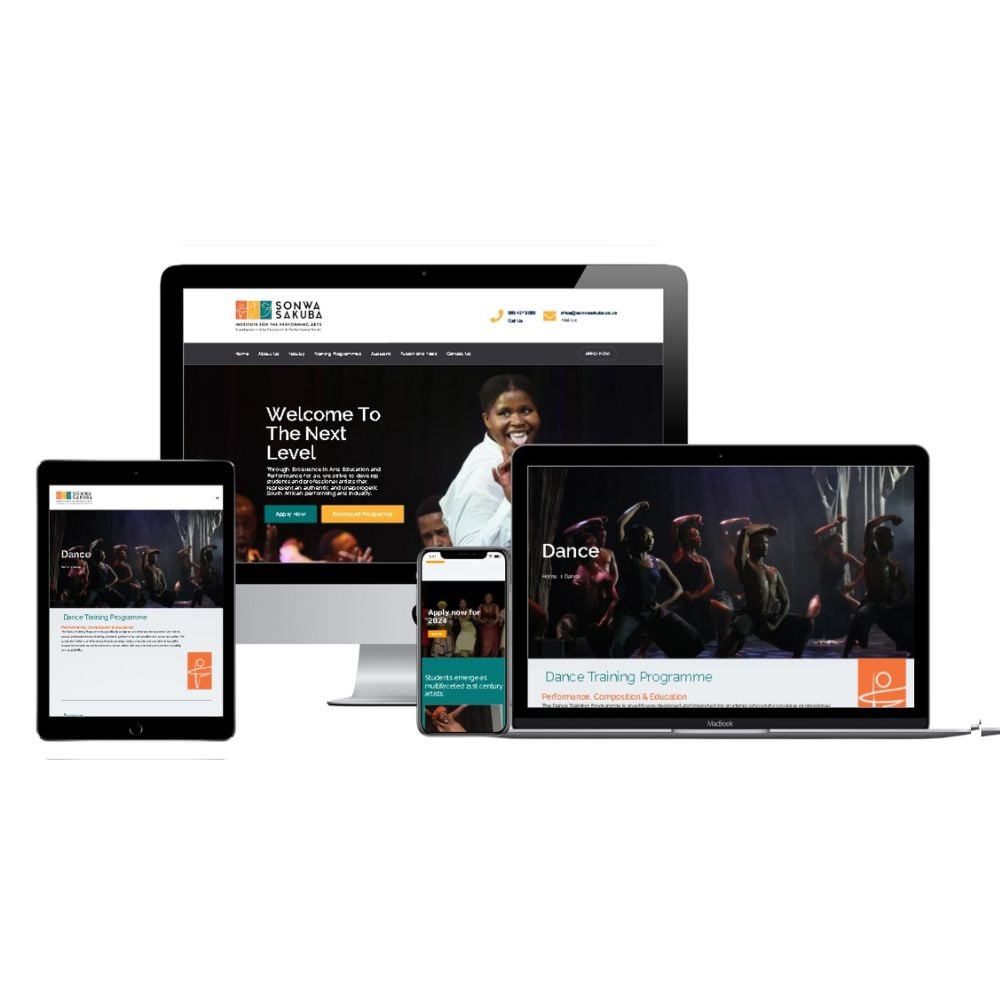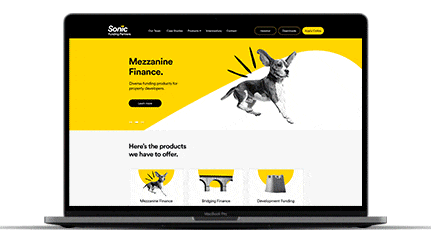Responsive Website Design for Seamless Viewing on Any Device
Responsive Website Design for Seamless Viewing on Any Device
Blog Article
Leading Tips for Developing an Impactful Website Style That Transforms
In today's electronic landscape, the significance of an impactful site layout can not be overemphasized, specifically when it involves transforming visitors into customers. To attain this, one should think about a variety of variables, including understanding the target market, prioritizing customer experience, and enhancing for mobile platforms. The strategic use of compelling call-to-actions and a distinct visual power structure plays a vital function in assisting customers with their journey. As we discover these crucial elements, it comes to be obvious that the success of your site depends upon more than simply visual appeal; it needs a thoughtful approach to layout and functionality.

Understand Your Target Market
Recognizing your target market is essential to effective site layout, as it prepares for creating an engaging customer experience. Determining who your individuals are, including their demographics, preferences, and behaviors, enables developers to tailor the site's content, layout, and capability to satisfy certain needs.
Performing comprehensive marketing research is essential in this procedure. Surveys, interviews, and analytics can give useful insights into customer assumptions and discomfort factors. By assembling this data, designers can create user personalities that stand for various sections of the target market, making sure that layout decisions are notified and pertinent.
Additionally, recognizing the target audience assists in selecting proper layout elements such as color design, typography, and imagery that resonate with customers. A website that speaks directly to its audience promotes a sense of link and trust, urging longer gos to and higher conversion rates.
Ultimately, a user-centered technique to web site design not just boosts customer satisfaction however likewise supports organization purposes by driving engagement and commitment. By focusing on the demands and preferences of the target audience, a site can efficiently serve its purpose and attain desired results.
Prioritize Individual Experience
To enhance the total effectiveness of a website, prioritizing customer experience (UX) is important (Website Design). A properly designed UX makes certain that visitors can browse the site easily, find information swiftly, and engage with content meaningfully. This causes increased individual fulfillment and higher conversion rates
Begin by implementing user-friendly navigating. Menus must be logically structured, enabling customers to locate essential areas of the website with marginal effort. Uniformity in design aspects, such as color pattern and font styles, cultivates familiarity, which is essential for preserving customer interaction.
Furthermore, think about the packing rate of your internet site. A hold-up of simply a couple of seconds can lead to significant drop-offs, as customers are less likely to wait for a slow-loading web page. Improving images and optimizing code can improve performance and keep site visitors.
Additionally, clearness in content discussion is crucial. Use succinct, engaging language and separate text with visuals to enhance readability. By prioritizing individual experience, you not just create a more delightful environment for visitors yet additionally enhance your brand name's integrity. Inevitably, a concentrate on UX is a financial investment in the long-term success of your site.
Maximize for Mobile Gadgets
Maximizing for mobile phones is critical in today's digital landscape, where a raising number of users gain access to websites with smart devices published here and tablet computers. A mobile-friendly layout not only enhances user experience however additionally plays a significant function in improving internet search engine positions. To accomplish this, it is important to take on a responsive design that automatically changes to various display sizes and orientations.

Filling speed is an additional critical factor; mobile customers are normally less person and anticipate fast accessibility to details. By focusing on mobile optimization, you ensure that your web site remains competitive and effectively involves a broader target market.
Use Compelling Call-to-Actions
A website's efficiency often rests on its capability to lead site visitors toward preferred actions, making compelling call-to-actions (CTAs) essential components of design. CTAs work as the pivotal points that route customers to involve with the website, whether that indicates buying, signing up for an e-newsletter, or downloading a resource.
To produce efficient CTAs, clearness is critical. Usage succinct language that plainly interacts the action you desire the individual to take. Expressions such as "Begin," "Register Free," or "Store Now" not just share urgency yet likewise eliminate ambiguity. The placement of CTAs is similarly crucial; they must be tactically placed throughout the page to ensure they are conveniently noticeable, specifically in high-traffic areas.
In addition, the style of CTAs ought to stand apart without being meddlesome. Click Here Use contrasting shades and clear fonts to ensure they record focus. Furthermore, consider utilizing directional signs, such as arrowheads or images, to lead customers towards these switches. By concentrating on these components, services can considerably boost customer engagement, driving conversions and inevitably attaining their web site's goals.
Concentrate On Visual Hierarchy
Reliable website layout relies greatly on a well-structured visual pecking order that overviews customers through web content perfectly. By arranging components in a manner that focuses on Check This Out info, designers can improve individual experience and promote decision-making. This includes utilizing size, color, contrast, and spacing purposefully to accentuate the most essential components of a website.
The usage of bigger typefaces for headings and subheadings develops a clear difference in between different areas, permitting users to scan content easily. In addition, employing different shades for buttons and calls-to-action can record customer attention and encourage communication. Whitespace is another crucial element; it stops clutter and makes it possible for individuals to concentrate on essential messages without diversions.
Images and graphics must complement the text while also adhering to the well-known power structure, enhancing the general message (Website Design). Uniformity in layout components, such as color design and typography, further strengthens the visual hierarchy, making navigating intuitive

Conclusion
In conclusion, effective web site style necessitates an extensive understanding of the target audience, prioritization of customer experience, and mobile optimization. Inevitably, a well-executed website style offers as a vital component in driving customer actions and achieving company goals.
Report this page